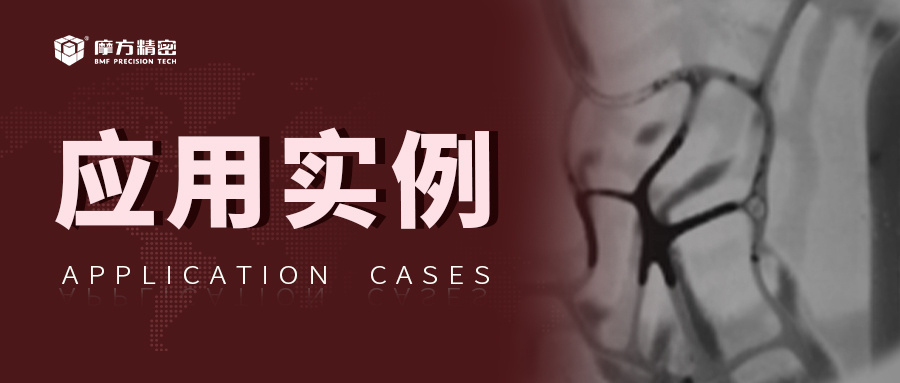推荐厂家
暂无
暂无
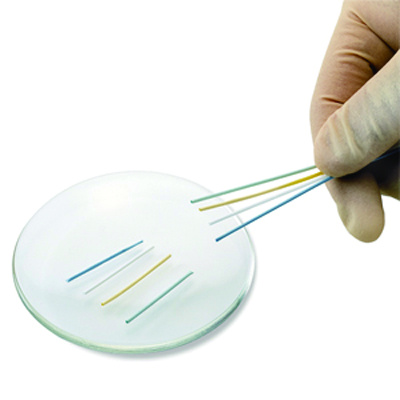

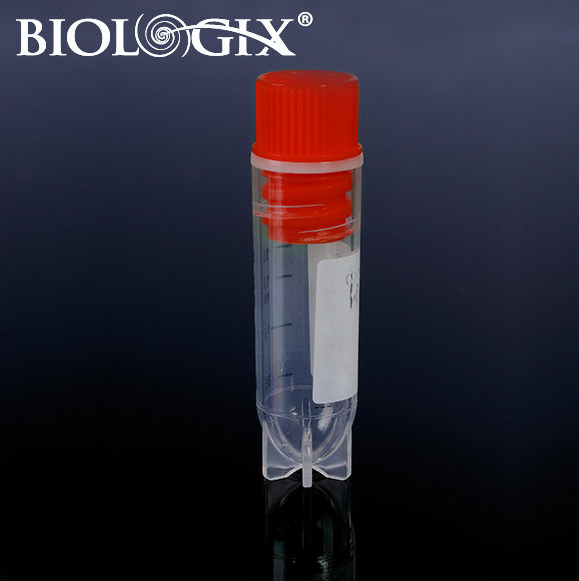
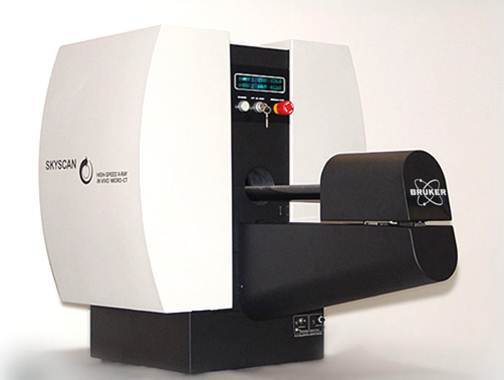
 400-889-7796
400-889-7796
 留言咨询
留言咨询
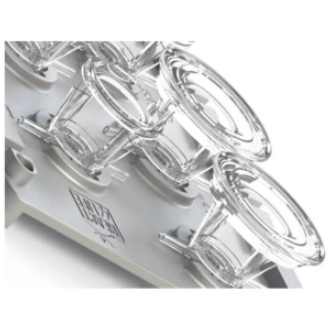
 留言咨询
留言咨询
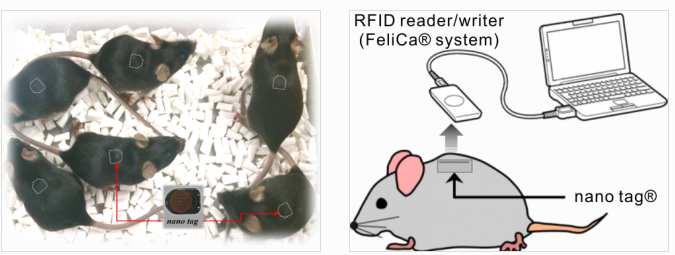
 400-860-5168转1345
400-860-5168转1345
 留言咨询
留言咨询
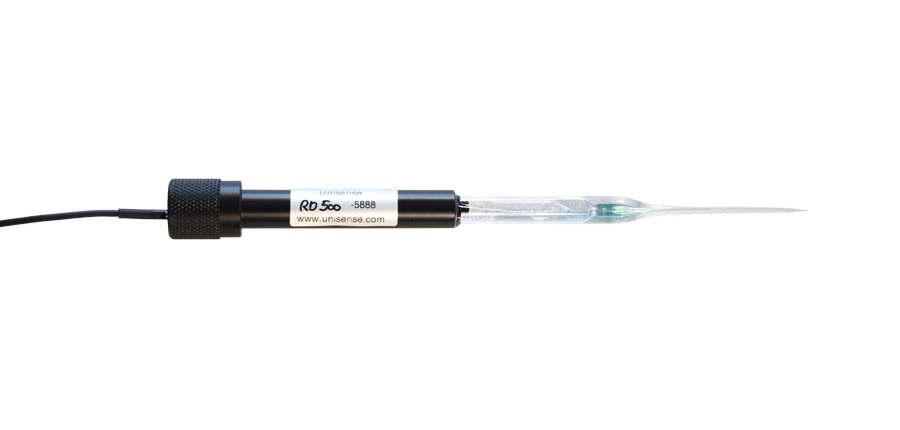
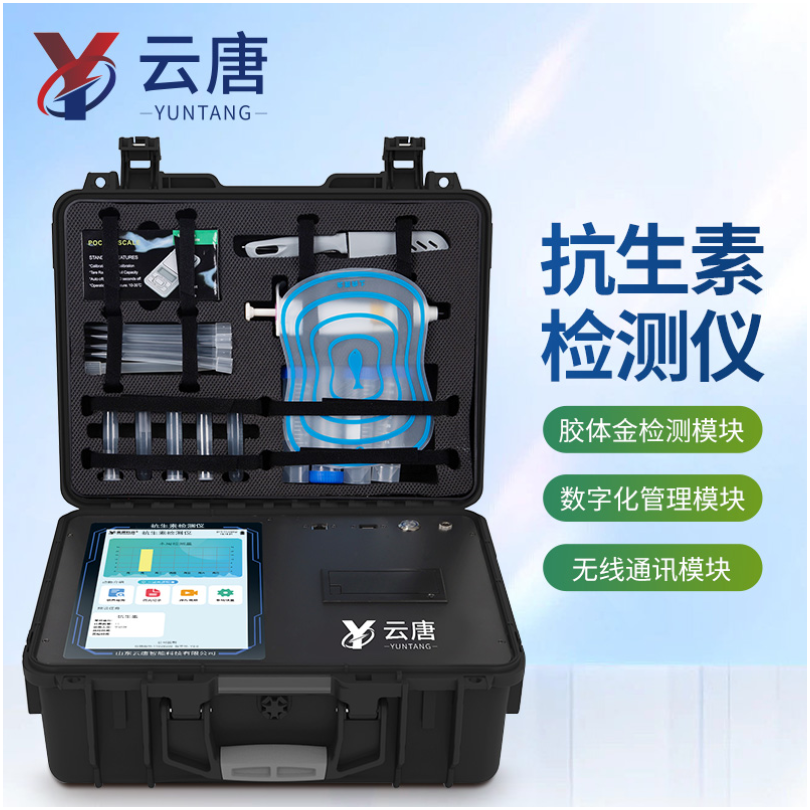

[align=center][font='times new roman'][size=21px]肿瘤细胞分泌的外[/size][/font][font='times new roman'][size=21px]泌[/size][/font][font='times new roman'][size=21px]体在机体内的作用[/size][/font][/align][font='times new roman'][size=16px]摘要[/size][/font][font='times new roman'][size=16px] [/size][/font][font='times new roman'][size=16px]肿瘤细胞通过产生,释放和利用外[/size][/font][font='times new roman'][size=16px]泌[/size][/font][font='times new roman'][size=16px]体来促进肿瘤发生发展。肿瘤来源的外[/size][/font][font='times new roman'][size=16px]泌[/size][/font][font='times new roman'][size=16px]体在肿瘤中的作用机制以成为目前的研究热点。外[/size][/font][font='times new roman'][size=16px]泌[/size][/font][font='times new roman'][size=16px]体作为信息载体,可将遗传信息从肿瘤细胞传递到位于近处或远处的正常或其他异常细胞。所有体液中[/size][/font][font='times new roman'][size=16px]均[/size][/font][font='times new roman'][size=16px]发现了肿瘤来源的外[/size][/font][font='times new roman'][size=16px]泌[/size][/font][font='times new roman'][size=16px]体,与靶细胞接触后,[/size][/font][font='times new roman'][size=16px]外[/size][/font][font='times new roman'][size=16px]泌[/size][/font][font='times new roman'][size=16px]体[/size][/font][font='times new roman'][size=16px]会改变受体[/size][/font][font='times new roman'][size=16px]细胞[/size][/font][font='times new roman'][size=16px]的表型和功能属性,[/size][/font][font='times new roman'][size=16px]起到促进[/size][/font][font='times new roman'][size=16px]血管生成,血栓形成,免疫抑制,肿瘤转移和耐药的作用。[/size][/font][font='times new roman'][size=16px]外[/size][/font][font='times new roman'][size=16px]泌[/size][/font][font='times new roman'][size=16px]体[/size][/font][font='times new roman'][size=16px]在抑制宿主抗肿瘤反应和[/size][/font][font='times new roman'][size=16px]介导[/size][/font][font='times new roman'][size=16px]耐药中发挥重要作用。肿瘤来源的外[/size][/font][font='times new roman'][size=16px]泌[/size][/font][font='times new roman'][size=16px]体可能会干扰癌症患者的免疫治疗。它们在癌症进展以及癌症治疗中的生物学作用表明肿瘤来源的外[/size][/font][font='times new roman'][size=16px]泌[/size][/font][font='times new roman'][size=16px]体是致癌转化的关键组成部分。[/size][/font][font='times new roman'][size=16px]关键词[/size][/font][font='times new roman'][size=16px] [/size][/font][font='times new roman'][size=16px]外[/size][/font][font='times new roman'][size=16px]泌[/size][/font][font='times new roman'][size=16px]体;肿瘤转移;耐药;免疫抑制;血栓形成[/size][/font][font='times new roman'][size=16px]多细胞生物[/size][/font][font='times new roman'][size=16px]体[/size][/font][font='times new roman'][size=16px]中相邻细胞之间的通讯通常包括细胞内物质的交换和共享,这些[/size][/font][font='times new roman'][size=16px]过程[/size][/font][font='times new roman'][size=16px]是通过细胞间连接、突触或通过吞噬作用形成的,都需要细胞接触并且在短距离内进行。相反,外[/size][/font][font='times new roman'][size=16px]泌体代表[/size][/font][font='times new roman'][size=16px]了信息传递的独特形式,既可以在短距离传递,也可以在长距离下进行信息交流。肿瘤来源的外[/size][/font][font='times new roman'][size=16px]泌[/size][/font][font='times new roman'][size=16px]体可以将信号从肿瘤细胞转移到远端组织和器官。[/size][/font][font='times new roman'][size=16px]外[/size][/font][font='times new roman'][size=16px]泌[/size][/font][font='times new roman'][size=16px]体[/size][/font][font='times new roman'][size=16px]存在于机体循环中,并可以随时进入身体的各个部位。它们带有能够与内皮细胞接触并促进外[/size][/font][font='times new roman'][size=16px]泌[/size][/font][font='times new roman'][size=16px]体进入血管和组织的表面成分[/size][/font][font='times new roman'][size=16px][[/size][/font][font='times new roman'][size=16px]1,2[/size][/font][font='times new roman'][size=16px]][/size][/font][font='times new roman'][size=16px]。但是肿瘤来源的外[/size][/font][font='times new roman'][size=16px]泌[/size][/font][font='times new roman'][size=16px]体仅占患者血浆中总外[/size][/font][font='times new roman'][size=16px]泌[/size][/font][font='times new roman'][size=16px]体的[/size][/font][font='times new roman'][size=16px]一[/size][/font][font='times new roman'][size=16px]小部分,且该部分的含量可根据肿瘤进展而改变。[/size][/font]1. [font='times new roman'][size=16px]外[/size][/font][font='times new roman'][size=16px]泌[/size][/font][font='times new roman'][size=16px]体在肿瘤转移中的作用[/size][/font][font='times new roman'][size=16px]肿瘤[/size][/font][font='times new roman'][size=16px]细胞[/size][/font][font='times new roman'][size=16px]的转移过程[/size][/font][font='times new roman'][size=16px]开始[/size][/font][font='times new roman'][size=16px]于肿瘤细胞经历[/size][/font][font='times new roman'][size=16px]了[/size][/font][font='times new roman'][size=16px]上皮间质转化([/size][/font][font='times new roman'][size=16px]Epithelial-to-mesenchymal transition[/size][/font][font='times new roman'][size=16px],[/size][/font][font='times new roman'][size=16px]EMT[/size][/font][font='times new roman'][size=16px])。肿瘤细胞[/size][/font][font='times new roman'][size=16px]获得[/size][/font][font='times new roman'][size=16px]迁移[/size][/font][font='times new roman'][size=16px]能力,并[/size][/font][font='times new roman'][size=16px]进入血液[/size][/font][font='times new roman'][size=16px]和[/size][/font][font='times new roman'][size=16px]淋巴系统[/size][/font][font='times new roman'][size=16px],逐渐[/size][/font][font='times new roman'][size=16px]转移[/size][/font][font='times new roman'][size=16px]到其他组织[/size][/font][font='times new roman'][size=16px]。[/size][/font][font='times new roman'][size=16px]这些[/size][/font][font='times new roman'][size=16px]肿瘤细胞产生具有独特分子特征的外[/size][/font][font='times new roman'][size=16px]泌[/size][/font][font='times new roman'][size=16px]体,[/size][/font][font='times new roman'][size=16px]主要包含[/size][/font][font='times new roman'][size=16px]EMT[/size][/font][font='times new roman'][size=16px]相关的蛋白质与迁移和侵袭所需的分子,[/size][/font][font='times new roman'][size=16px]如[/size][/font][font='times new roman'][size=16px]前列腺癌释放的外[/size][/font][font='times new roman'][size=16px]泌[/size][/font][font='times new roman'][size=16px]体中的α[/size][/font][font='times new roman'][size=16px]v[/size][/font][font='times new roman'][size=16px]β[/size][/font][font='times new roman'][size=16px]6[/size][/font][font='times new roman'][size=16px]整联蛋白[/size][/font][font='times new roman'][size=16px][3][/size][/font][font='times new roman'][size=16px],白血病[/size][/font][font='times new roman'][size=16px]或[/size][/font][font='times new roman'][size=16px]乳腺癌衍生的外[/size][/font][font='times new roman'][size=16px]泌[/size][/font][font='times new roman'][size=16px]体的[/size][/font][font='times new roman'][size=16px]Wnt[/size][/font][font='times new roman'][size=16px]通路[/size][/font][font='times new roman'][size=16px]成分[/size][/font][font='times new roman'][size=16px][4,5][/size][/font][font='times new roman'][size=16px],以及胃肠道间质瘤([/size][/font][font='times new roman'][size=16px]GIST[/size][/font][font='times new roman'][size=16px])产生的外[/size][/font][font='times new roman'][size=16px]泌[/size][/font][font='times new roman'][size=16px]体中的[/size][/font][font='times new roman'][size=16px]KIT [/size][/font][font='times new roman'][size=16px][6][/size][/font][font='times new roman'][size=16px]。这些外[/size][/font][font='times new roman'][size=16px]泌[/size][/font][font='times new roman'][size=16px]体中缺氧诱导因子[/size][/font][font='times new roman'][size=16px]([/size][/font][font='times new roman'][size=16px]HIF[/size][/font][font='times new roman'][size=16px])[/size][/font][font='times new roman'][size=16px]的含量增加,[/size][/font][font='times new roman'][size=16px]促炎因子[/size][/font][font='times new roman'][size=16px]的含量也增加[/size][/font][font='times new roman'][size=16px][7][/size][/font][font='times new roman'][size=16px]。准备迁移的肿瘤细胞产生的外[/size][/font][font='times new roman'][size=16px]泌[/size][/font][font='times new roman'][size=16px]体可与机体的血管、基质成分和免疫细胞相互作用,完成转移前的准备[/size][/font][font='times new roman'][size=16px][8][/size][/font][font='times new roman'][size=16px]。黑色素瘤来源的外[/size][/font][font='times new roman'][size=16px]泌[/size][/font][font='times new roman'][size=16px]体显示在前哨淋巴结中积累,刺激血管生成,重塑细胞外基质并诱导黑色素瘤细胞富集到淋巴结中[/size][/font][font='times new roman'][size=16px][9][/size][/font][font='times new roman'][size=16px]。[/size][/font][font='times new roman'][size=16px]Peinado[/size][/font][font='times new roman'][size=16px]研究团队证明了,从高度转移的鼠类黑[/size][/font][font='times new roman'][size=16px]色素瘤细胞衍生的外[/size][/font][font='times new roman'][size=16px]泌[/size][/font][font='times new roman'][size=16px]体能够将骨髓重编程为转移前的生理状态。现在已有研究支持肿瘤细胞分泌的外[/size][/font][font='times new roman'][size=16px]泌[/size][/font][font='times new roman'][size=16px]体与高度侵袭性的黑色素瘤细胞的发展有关,与空白对照组相比,实验组小鼠先前外[/size][/font][font='times new roman'][size=16px]泌[/size][/font][font='times new roman'][size=16px]体进行过注射处理,其体内黑色素瘤细胞的增殖和转移速率明显提高[/size][/font][font='times new roman'][size=16px][10][/size][/font][font='times new roman'][size=16px]。在许多有关鼠类和人体肿瘤来源的外[/size][/font][font='times new roman'][size=16px]泌[/size][/font][font='times new roman'][size=16px]体的近期研究中,已证明这些外[/size][/font][font='times new roman'][size=16px]泌[/size][/font][font='times new roman'][size=16px]体还携带微小[/size][/font][font='times new roman'][size=16px]RNA[/size][/font][font='times new roman'][size=16px]分子,将其转移至正常细胞并诱导其遗传和蛋白质谱发生变化,从而有利于转移形成[/size][/font][font='times new roman'][size=16px][11,12][/size][/font][font='times new roman'][size=16px]。肿瘤来源的外[/size][/font][font='times new roman'][size=16px]泌[/size][/font][font='times new roman'][size=16px]体已被证明带有[/size][/font][font='times new roman'][size=16px]CD39[/size][/font][font='times new roman'][size=16px]和[/size][/font][font='times new roman'][size=16px]CD73[/size][/font][font='times new roman'][size=16px],它们是催化腺苷产生的外核苷酸酶[/size][/font][font='times new roman'][size=16px][13][/size][/font][font='times new roman'][size=16px]。腺苷在机体内可[/size][/font][font='times new roman'][size=16px]介[/size][/font][font='times new roman'][size=16px]导免疫抑制,发挥促进血管生成并驱动细胞基质重塑的重要作用,所有这些功能都促进肿瘤细胞迁移及其进入淋巴结。肿瘤外[/size][/font][font='times new roman'][size=16px]泌体支持[/size][/font][font='times new roman'][size=16px]转移的能力可以通过腺苷参与不同类别的分子途径[/size][/font][font='times new roman'][size=16px][14][/size][/font][font='times new roman'][size=16px]。[/size][/font]2. [font='times new roman'][size=16px]外[/size][/font][font='times new roman'][size=16px]泌[/size][/font][font='times new roman'][size=16px]体在肿瘤耐药性中的作用[/size][/font][font='times new roman'][size=16px]肿瘤对放射和化学药物的抵抗作用是肿瘤患者临床治疗中面对的严重问题,至今尚未得到解决。值得注意的是有研究指出肿瘤分泌的外[/size][/font][font='times new roman'][size=16px]泌[/size][/font][font='times new roman'][size=16px]体在肿瘤的耐药性中起重要作用;肿瘤来源的外[/size][/font][font='times new roman'][size=16px]泌[/size][/font][font='times new roman'][size=16px]体通过多种机制促进耐药性的发展,例如肿瘤细胞可以将化学治疗性药物(例如顺铂)浓缩并通过外[/size][/font][font='times new roman'][size=16px]泌[/size][/font][font='times new roman'][size=16px]体从细胞质中去除[/size][/font][font='times new roman'][size=16px][15][/size][/font][font='times new roman'][size=16px];此外肿瘤细胞还可以简单地将化疗药物包装到外[/size][/font][font='times new roman'][size=16px]泌[/size][/font][font='times new roman'][size=16px]体中以保护自己免受细胞毒性作用。耐药性肿瘤细胞可以通过外[/size][/font][font='times new roman'][size=16px]泌[/size][/font][font='times new roman'][size=16px]体将抗性传递给敏感细胞,从而产生新的耐药性肿瘤细胞株。例如,已显示某些[/size][/font][font='times new roman'][size=16px]RNA[/size][/font][font='times new roman'][size=16px]([/size][/font][font='times new roman'][size=16px]miR-100[/size][/font][font='times new roman'][size=16px],[/size][/font][font='times new roman'][size=16px]miR-222[/size][/font][font='times new roman'][size=16px],[/size][/font][font='times new roman'][size=16px]miR-30a[/size][/font][font='times new roman'][size=16px]和[/size][/font][font='times new roman'][size=16px]miR-17[/size][/font][font='times new roman'][size=16px])在外[/size][/font][font='times new roman'][size=16px]泌[/size][/font][font='times new roman'][size=16px]体中从抗阿霉素和多[/size][/font][font='times new roman'][size=16px]西他赛[/size][/font][font='times new roman'][size=16px]的乳腺癌耐药细胞系转移至敏感细胞[/size][/font][font='times new roman'][size=16px]系[/size][/font][font='times new roman'][size=16px]赋予抗药性[/size][/font][font='times new roman'][size=16px][16][/size][/font][font='times new roman'][size=16px]。有研究报道,在乳腺癌中,由[/size][/font][font='times new roman'][size=16px]HER2[/size][/font][font='times new roman'][size=16px]+[/size][/font][font='times new roman'][size=16px]细胞系或[/size][/font][font='times new roman'][size=16px]HER2[/size][/font][font='times new roman'][size=16px]+[/size][/font][font='times new roman'][size=16px]的肿瘤患者[/size][/font][font='times new roman'][size=16px]产生的[/size][/font][font='times new roman'][size=16px]携带[/size][/font][font='times new roman'][size=16px]HER2[/size][/font][font='times new roman'][size=16px]的外[/size][/font][font='times new roman'][size=16px]泌[/size][/font][font='times new roman'][size=16px]体[/size][/font][font='times new roman'][size=16px]可以[/size][/font][font='times new roman'][size=16px]清除特异性抗肿瘤药[/size][/font][font='times new roman'][size=16px]物曲妥珠单[/size][/font][font='times new roman'][size=16px]抗[/size][/font][font='times new roman'][size=16px][17,18][/size][/font][font='times new roman'][size=16px]。多[/size][/font][font='times new roman'][size=16px]西他赛[/size][/font][font='times new roman'][size=16px]耐药性已在前列腺癌中进行了研究,发现其抗药性是通过多药耐药蛋白[/size][/font][font='times new roman'][size=16px]-1[/size][/font][font='times new roman'][size=16px]([/size][/font][font='times new roman'][size=16px]MDR-1 / P-[/size][/font][font='times new roman'][size=16px]gp[/size][/font][font='times new roman'][size=16px])的外[/size][/font][font='times new roman'][size=16px]泌体转移[/size][/font][font='times new roman'][size=16px]而赋予的,多药耐药蛋白[/size][/font][font='times new roman'][size=16px]-1[/size][/font][font='times new roman'][size=16px]是一种[/size][/font][font='times new roman'][size=16px]P-[/size][/font][font='times new roman'][size=16px]糖蛋白转运蛋白,通常在耐药肿瘤中过表达[/size][/font][font='times new roman'][size=16px][19][/size][/font][font='times new roman'][size=16px]。[/size][/font][font='times new roman'][size=16px]顺铂耐药[/size][/font][font='times new roman'][size=16px]的卵巢癌产生的外[/size][/font][font='times new roman'][size=16px]泌[/size][/font][font='times new roman'][size=16px]体中富含其他转运蛋白,例如[/size][/font][font='times new roman'][size=16px]MDR-2[/size][/font][font='times new roman'][size=16px],[/size][/font][font='times new roman'][size=16px]ATP-7A[/size][/font][font='times new roman'][size=16px]和[/size][/font][font='times new roman'][size=16px]ATP-7B [/size][/font][font='times new roman'][size=16px][15][/size][/font][font='times new roman'][size=16px]。最近的研究表明,耐药性部分归因于外[/size][/font][font='times new roman'][size=16px]泌[/size][/font][font='times new roman'][size=16px]体中的[/size][/font][font='times new roman'][size=16px]miRNA[/size][/font][font='times new roman'][size=16px]从耐药性癌细胞向敏感性癌细胞的细胞间转移[/size][/font][font='times new roman'][size=16px][16][/size][/font][font='times new roman'][size=16px]。黑色素瘤动物模型的体内研究表明,质子泵抑制剂([/size][/font][font='times new roman'][size=16px]PPI[/size][/font][font='times new roman'][size=16px])和低[/size][/font][font='times new roman'][size=16px]pH[/size][/font][font='times new roman'][size=16px]剂的联合使用可有效降低外[/size][/font][font='times new roman'][size=16px]泌[/size][/font][font='times new roman'][size=16px]体[/size][/font][font='times new roman'][size=16px]对顺铂的[/size][/font][font='times new roman'][size=16px]耐药性[/size][/font][font='times new roman'][size=16px][20][/size][/font][font='times new roman'][size=16px]。尽管现有的研究表明外[/size][/font][font='times new roman'][size=16px]泌[/size][/font][font='times new roman'][size=16px]体与肿瘤的耐药[/size][/font][font='times new roman'][size=16px]性转移有关,但更详细的分子和遗传学分析对于确认上述研究并确定该过程中的潜在机制是十分重要的。[/size][/font]3. [font='times new roman'][size=16px]外[/size][/font][font='times new roman'][size=16px]泌[/size][/font][font='times new roman'][size=16px]体对宿主免疫功能的影响[/size][/font][font='times new roman'][size=16px]肿瘤来源的外[/size][/font][font='times new roman'][size=16px]泌[/size][/font][font='times new roman'][size=16px]体[/size][/font][font='times new roman'][size=16px]不仅仅在[/size][/font][font='times new roman'][size=16px]肿瘤微环境[/size][/font][font='times new roman'][size=16px]起[/size][/font][font='times new roman'][size=16px]免疫抑制或免疫刺激作用,与循环[/size][/font][font='times new roman'][size=16px]系统[/size][/font][font='times new roman'][size=16px]以及各种淋巴器官中的免疫细胞也[/size][/font][font='times new roman'][size=16px]可以[/size][/font][font='times new roman'][size=16px]相互[/size][/font][font='times new roman'][size=16px]作用[/size][/font][font='times new roman'][size=16px]。[/size][/font][font='times new roman'][size=16px]例如,[/size][/font][font='times new roman'][size=16px]白血病胚泡衍生的外[/size][/font][font='times new roman'][size=16px]泌[/size][/font][font='times new roman'][size=16px]体在血浆中[/size][/font][font='times new roman'][size=16px]聚集[/size][/font][font='times new roman'][size=16px]并直接与免疫细胞作用[/size][/font][font='times new roman'][size=16px][21][/size][/font][font='times new roman'][size=16px]。在肿瘤存在的情况下,外[/size][/font][font='times new roman'][size=16px]泌[/size][/font][font='times new roman'][size=16px]体与周围免疫细胞的相互作用会导致免疫抑制[/size][/font][font='times new roman'][size=16px][22][/size][/font][font='times new roman'][size=16px]。[/size][/font][font='times new roman'][size=16px]实验性小鼠模型的体内研究表明,注射肿瘤来源的外[/size][/font][font='times new roman'][size=16px]泌[/size][/font][font='times new roman'][size=16px]体后,外周免疫细胞的功能发生改变,这些改变[/size][/font][font='times new roman'][size=16px]导致[/size][/font][font='times new roman'][size=16px]肿瘤生长和更短的生长周期[/size][/font][font='times new roman'][size=16px][23][/size][/font][font='times new roman'][size=16px]。将离体分离的人[/size][/font][font='times new roman'][size=16px]T[/size][/font][font='times new roman'][size=16px]细胞、[/size][/font][font='times new roman'][size=16px]B[/size][/font][font='times new roman'][size=16px]细胞或[/size][/font][font='times new roman'][size=16px]NK[/size][/font][font='times new roman'][size=16px]细胞与肿瘤来源的外[/size][/font][font='times new roman'][size=16px]泌[/size][/font][font='times new roman'][size=16px]体共同孵育,导致[/size][/font][font='times new roman'][size=16px]其[/size][/font][font='times new roman'][size=16px]介[/size][/font][font='times new roman'][size=16px]导的抗肿瘤功能部分或完全丧失,其机制与上述中外[/size][/font][font='times new roman'][size=16px]泌[/size][/font][font='times new roman'][size=16px]体的机制相同。癌症患者血液和淋巴器官中常见免疫抑制因子,并且似乎与血浆中外[/size][/font][font='times new roman'][size=16px]泌[/size][/font][font='times new roman'][size=16px]体的水平相关。循环肿瘤源性外[/size][/font][font='times new roman'][size=16px]泌[/size][/font][font='times new roman'][size=16px]体的分子和遗传特征部分反映了在肿瘤细胞中发现的分子和遗传特征,这些特征正在作为鉴定癌症进展的非侵入性生物标志物的潜在方法被广泛研究[/size][/font][font='times new roman'][size=16px][24][/size][/font][font='times new roman'][size=16px]。[/size][/font][font='times new roman'][size=16px]肿瘤源性外[/size][/font][font='times new roman'][size=16px]泌[/size][/font][font='times new roman'][size=16px]体的免疫抑制机制之一是癌症患者循环中活化的[/size][/font][font='times new roman'][size=16px]CD8[/size][/font][font='times new roman'][size=16px]+[/size][/font][font='times new roman'][size=16px] T[/size][/font][font='times new roman'][size=16px]效应细胞的凋亡。癌症患者循环中几乎所有的[/size][/font][font='times new roman'][size=16px]CD8[/size][/font][font='times new roman'][size=16px]+[/size][/font][font='times new roman'][size=16px] T[/size][/font][font='times new roman'][size=16px]淋巴细胞都表达表面[/size][/font][font='times new roman'][size=16px]CD95[/size][/font][font='times new roman'][size=16px],同时有许多表达[/size][/font][font='times new roman'][size=16px]PD-1 [/size][/font][font='times new roman'][size=16px][25][/size][/font][font='times new roman'][size=16px]。因此,它们分别受到携带[/size][/font][font='times new roman'][size=16px]FasL[/size][/font][font='times new roman'][size=16px]膜形式[/size][/font][font='times new roman'][size=16px]的外[/size][/font][font='times new roman'][size=16px]泌[/size][/font][font='times new roman'][size=16px]体或携带[/size][/font][font='times new roman'][size=16px]PD-L1[/size][/font][font='times new roman'][size=16px]的外[/size][/font][font='times new roman'][size=16px]泌[/size][/font][font='times new roman'][size=16px]体的凋亡影响。这些凋亡诱导分子在外[/size][/font][font='times new roman'][size=16px]泌[/size][/font][font='times new roman'][size=16px]体中的表达水平与癌症患者循环中对细胞凋亡敏感的活化[/size][/font][font='times new roman'][size=16px]CD8[/size][/font][font='times new roman'][size=16px]+[/size][/font][font='times new roman'][size=16px] T[/size][/font][font='times new roman'][size=16px]细胞的频率相关。此外,循环中的[/size][/font][font='times new roman'][size=16px]CD8[/size][/font][font='times new roman'][size=16px]+[/size][/font][font='times new roman'][size=16px] T[/size][/font][font='times new roman'][size=16px]细胞的“自发凋亡”与疾病分期和预后之间存在显着相关性[/size][/font][font='times new roman'][size=16px][26][/size][/font][font='times new roman'][size=16px]。[/size][/font][font='times new roman'][size=16px]TEX[/size][/font][font='times new roman'][size=16px]介[/size][/font][font='times new roman'][size=16px]导的导致活化[/size][/font][font='times new roman'][size=16px]CD8[/size][/font][font='times new roman'][size=16px]+[/size][/font][font='times new roman'][size=16px] T[/size][/font][font='times new roman'][size=16px]细胞凋亡的信号与靶细胞中的早期膜变化([/size][/font][font='times new roman'][size=16px]即膜联蛋白[/size][/font][font='times new roman'][size=16px]V[/size][/font][font='times new roman'][size=16px]结合)、半[/size][/font][font='times new roman'][size=16px]胱天冬酶[/size][/font][font='times new roman'][size=16px]3[/size][/font][font='times new roman'][size=16px]裂解、线粒体细胞色素[/size][/font][font='times new roman'][size=16px]C[/size][/font][font='times new roman'][size=16px]释放、线粒体膜电位([/size][/font][font='times new roman'][size=16px]MMP[/size][/font][font='times new roman'][size=16px])的损失以及最后的[/size][/font][font='times new roman'][size=16px]DNA[/size][/font][font='times new roman'][size=16px]片段[/size][/font][font='times new roman'][size=16px]化有关[/size][/font][font='times new roman'][size=16px][27][/size][/font][font='times new roman'][size=16px]。[/size][/font][font='times new roman'][size=16px] PI3K / AKT[/size][/font][font='times new roman'][size=16px]途径成为活化的[/size][/font][font='times new roman'][size=16px]CD8[/size][/font][font='times new roman'][size=16px]+[/size][/font][font='times new roman'][size=16px] T[/size][/font][font='times new roman'][size=16px]细胞中肿瘤来源的外[/size][/font][font='times new roman'][size=16px]泌[/size][/font][font='times new roman'][size=16px]体的主要靶标。有研究发现调节[/size][/font][font='times new roman'][size=16px]PI3K-AKT[/size][/font][font='times new roman'][size=16px]信号的[/size][/font][font='times new roman'][size=16px]PTEN[/size][/font][font='times new roman'][size=16px]是外[/size][/font][font='times new roman'][size=16px]泌[/size][/font][font='times new roman'][size=16px]体的组成成分,并[/size][/font][font='times new roman'][size=16px]介[/size][/font][font='times new roman'][size=16px]导受体细胞中的磷酸酶活性。将活化的[/size][/font][font='times new roman'][size=16px]CD8[/size][/font][font='times new roman'][size=16px]+[/size][/font][font='times new roman'][size=16px] T[/size][/font][font='times new roman'][size=16px]细胞与肿瘤来源的外[/size][/font][font='times new roman'][size=16px]泌[/size][/font][font='times new roman'][size=16px]体共同孵育会导致严重的时间依赖性[/size][/font][font='times new roman'][size=16px]AKT[/size][/font][font='times new roman'][size=16px]去磷酸化,并同时下调抗凋亡蛋白[/size][/font][font='times new roman'][size=16px]Bcl-2[/size][/font][font='times new roman'][size=16px],[/size][/font][font='times new roman'][size=16px]Bcl-xL[/size][/font][font='times new roman'][size=16px]和[/size][/font][font='times new roman'][size=16px]MCl-1[/size][/font][font='times new roman'][size=16px]的表达水平,同时,肿瘤细胞分泌的外[/size][/font][font='times new roman'][size=16px]泌[/size][/font][font='times new roman'][size=16px]体会上调促凋亡蛋白[/size][/font][font='times new roman'][size=16px]Bax[/size][/font][font='times new roman'][size=16px][28][/size][/font][font='times new roman'][size=16px]。这些研究表明,肿瘤来源的外[/size][/font][font='times new roman'][size=16px]泌[/size][/font][font='times new roman'][size=16px]体通过参与外在和[/size][/font][font='times new roman'][size=16px]内在的凋亡途径来诱导活化的[/size][/font][font='times new roman'][size=16px]CD8[/size][/font][font='times new roman'][size=16px]+[/size][/font][font='times new roman'][size=16px] T[/size][/font][font='times new roman'][size=16px]细胞凋亡[/size][/font][font='times new roman'][size=16px][22][/size][/font][font='times new roman'][size=16px]。体外数据与癌症患者循环[/size][/font][font='times new roman'][size=16px]T[/size][/font][font='times new roman'][size=16px]细胞中促凋亡或抗凋亡家族成员表达的类似变化的报道一致[/size][/font][font='times new roman'][size=16px][7][/size][/font][font='times new roman'][size=16px]。[/size][/font][font='times new roman'][size=16px]肿瘤来源的外[/size][/font][font='times new roman'][size=16px]泌[/size][/font][font='times new roman'][size=16px]体可能会激活宿主的免疫系统。由于发现了肿瘤相关抗原([/size][/font][font='times new roman'][size=16px]TAA[/size][/font][font='times new roman'][size=16px])、[/size][/font][font='times new roman'][size=16px]MHC[/size][/font][font='times new roman'][size=16px]分子、伴侣蛋白(例如热休克蛋白[/size][/font][font='times new roman'][size=16px]HSP-70[/size][/font][font='times new roman'][size=16px]和[/size][/font][font='times new roman'][size=16px]HSP-90[/size][/font][font='times new roman'][size=16px])等,因此,研究人员对肿瘤衍生的外[/size][/font][font='times new roman'][size=16px]泌[/size][/font][font='times new roman'][size=16px]体的免疫刺激作用进行了详细的研究。实际上,肿瘤细胞释放并被免疫系统内化的外[/size][/font][font='times new roman'][size=16px]泌[/size][/font][font='times new roman'][size=16px]体是开发抗肿瘤疫苗中[/size][/font][font='times new roman'][size=16px]TAA[/size][/font][font='times new roman'][size=16px]的良好来源[/size][/font][font='times new roman'][size=16px][29,30][/size][/font][font='times new roman'][size=16px]。有研究报道在鼠类肿瘤模型中进行的疫苗接种研究证实,使用肿瘤衍生的外[/size][/font][font='times new roman'][size=16px]泌[/size][/font][font='times new roman'][size=16px]体进行有效的疫苗接种可诱导小鼠产生强大的抗肿瘤免疫力和肿瘤排斥反应[/size][/font][font='times new roman'][size=16px][31][/size][/font][font='times new roman'][size=16px]。基于这些报告,在人类临床试验中,肿瘤来源的外[/size][/font][font='times new roman'][size=16px]泌[/size][/font][font='times new roman'][size=16px]体分别被认为是疫苗佐剂和治疗性疫苗的设计的免疫激活剂和免疫原性抗原的贡献者。[/size][/font]4. [font='times new roman'][size=16px]外[/size][/font][font='times new roman'][size=16px]泌[/size][/font][font='times new roman'][size=16px]体在血栓形成过程中的作用[/size][/font][font='times new roman'][size=16px]晚期恶性肿瘤患者可能会产生足以危及生命的血栓。有研究指出,携带转移因子([/size][/font][font='times new roman'][size=16px]Tf[/size][/font][font='times new roman'][size=16px])的肿瘤来源外[/size][/font][font='times new roman'][size=16px]泌[/size][/font][font='times new roman'][size=16px]体可以诱导癌症相关的血栓形成[/size][/font][font='times new roman'][size=16px][32][/size][/font][font='times new roman'][size=16px]。[/size][/font][font='times new roman'][size=16px] [/size][/font][font='times new roman'][size=16px]Tf[/size][/font][font='times new roman'][size=16px]也被称为凝血因子,其在患者体内的过表达与肿瘤的进展和转移密切相关[/size][/font][font='times new roman'][size=16px][33][/size][/font][font='times new roman'][size=16px]。当癌细胞发生[/size][/font][font='times new roman'][size=16px]EMT[/size][/font][font='times new roman'][size=16px]过程时,它们开始释放含有高水平[/size][/font][font='times new roman'][size=16px]Tf[/size][/font][font='times new roman'][size=16px]的外[/size][/font][font='times new roman'][size=16px]泌[/size][/font][font='times new roman'][size=16px]体。这些富含[/size][/font][font='times new roman'][size=16px]Tf[/size][/font][font='times new roman'][size=16px]的外[/size][/font][font='times new roman'][size=16px]泌[/size][/font][font='times new roman'][size=16px]体可以被内皮细胞内化,并诱导其快速转化为促凝血表型。癌症患者血浆中存在大量促凝囊泡是一种不良预后因素[/size][/font][font='times new roman'][size=16px][32][/size][/font][font='times new roman'][size=16px]。但是,目前尚不清楚外[/size][/font][font='times new roman'][size=16px]泌体转移[/size][/font][font='times new roman'][size=16px]Tf[/size][/font][font='times new roman'][size=16px]及其促血栓作用如何促进癌症进展和转移形成。[/size][/font][font='times new roman'][size=16px]总结[/size][/font][font='times new roman'][size=16px]在过去的[/size][/font][font='times new roman'][size=16px]10[/size][/font][font='times new roman'][size=16px]年里,外[/size][/font][font='times new roman'][size=16px]泌[/size][/font][font='times new roman'][size=16px]体作为细胞间传递信息的载体而被熟知。虽然信息传递可能是外[/size][/font][font='times new roman'][size=16px]泌[/size][/font][font='times new roman'][size=16px]体的主要生物学作用,但这种囊泡通讯机制似乎超越了几乎所有的细胞功能,并调节所有正常和异常细胞的分子和遗传特征。肿瘤来源的外[/size][/font][font='times new roman'][size=16px]泌[/size][/font][font='times new roman'][size=16px]体引起了人们的兴趣,因为人们认为它们不仅能将肿瘤的信息传递给附近或远处的正常细胞,而且还能改变这些靶细胞的表型和功能,从而促进肿瘤的进展。在[/size][/font][font='times new roman'][size=16px]TME[/size][/font][font='times new roman'][size=16px]中,这些外[/size][/font][font='times new roman'][size=16px]泌[/size][/font][font='times new roman'][size=16px]体直接或间接有助于肿瘤的发生发展。在癌症中,循环外[/size][/font][font='times new roman'][size=16px]泌[/size][/font][font='times new roman'][size=16px]体的负荷和功能与健康供体不同。肿瘤来源的外[/size][/font][font='times new roman'][size=16px]泌[/size][/font][font='times new roman'][size=16px]体是血浆内容物的重要组成部分,它们的分子和基因图谱在疾病或治疗过程中发生变化,并且部分反映了母体肿瘤细胞的特征。此外,通过自分泌或旁分泌信号,肿瘤来源的外[/size][/font][font='times new roman'][size=16px]泌[/size][/font][font='times new roman'][size=16px]体调节肿瘤生长,驱动新生血管形成、细胞分化、迁移和生存,并协调转移性肿瘤扩散。肿[/size][/font][font='times new roman'][size=16px]瘤来源的外[/size][/font][font='times new roman'][size=16px]泌体似乎[/size][/font][font='times new roman'][size=16px]在整个癌变过程中发挥作用,并被肿瘤细胞设定为促进癌变的过程。它们还能抑制抗肿瘤免疫反应。此外,它们还可以将癌基因和致癌蛋白或其转录本从肿瘤细胞中转移到正常细胞。有趣的是,正常造血或组织细胞产生的外[/size][/font][font='times new roman'][size=16px]泌[/size][/font][font='times new roman'][size=16px]体可以[/size][/font][font='times new roman'][size=16px]介[/size][/font][font='times new roman'][size=16px]导抗肿瘤反应并维持体内平衡。区分好的和坏的外[/size][/font][font='times new roman'][size=16px]泌体成为[/size][/font][font='times new roman'][size=16px]未来沉默肿瘤来源的外[/size][/font][font='times new roman'][size=16px]泌[/size][/font][font='times new roman'][size=16px]体疗法的主要挑战。肿瘤来源的外[/size][/font][font='times new roman'][size=16px]泌[/size][/font][font='times new roman'][size=16px]体作为治疗靶点或癌症生物标志物进入这个领域之前,还需要进行更多的基础和临床工作。[/size][/font][align=center][font='times new roman'][size=21px][color=#000000]参考文献[/color][/size][/font][/align][1] [font='times new roman']Skog J, W[/font][font='times new roman']ü[/font][font='times new roman']rdinger[/font][font='times new roman'] T, Van Rijn S, et al. Glioblastoma [/font][font='times new roman']microvesicles[/font][font='times new roman'] transport RNA and proteins that promote [/font][font='times new roman']tumour[/font][font='times new roman'] growth and provide diagnostic biomarkers[/font][font='times new roman'][J].[/font][font='times new roman'] Nature Cell Biology, 2008, 10(12):1470-1476.[/font][2] [font='times new roman']Al-[/font][font='times new roman']Nedawi[/font][font='times new roman'] K, Meehan B, [/font][font='times new roman']Kerbel[/font][font='times new roman'] R S, et al. Endothelial expression of autocrine VEGF upon the uptake of tumor-derived [/font][font='times new roman']microvesicles[/font][font='times new roman'] containing oncogenic EGFR[J].[/font][font='times new roman'] [/font][font='times new roman']Proceedings of the National Academy of Sciences,[/font][font='times new roman'] [/font][font='times new roman']2009, 106(10):3794-3799.[/font][3] [font='times new roman']Bretz[/font][font='times new roman'] N P, [/font][font='times new roman']Ridinger[/font][font='times new roman'] J, Rupp A K, et al. Body fluid exosomes promote secretion of inflammatory cytokines in monocytic cells via Toll-like receptor signaling[J]. The Journal of biological chemistry, 2013, 288(51):36691.[/font][4] [font='times new roman']Chalmin[/font][font='times new roman'] F, [/font][font='times new roman']Ladoire[/font][font='times new roman'] S, Grégoire M, et al. Membrane-associated Hsp72 from tumor-derived exosomes mediates STAT3-dependent immunosuppressive function of mouse and human myeloid-derived suppressor cells[J]. Journal of Clinical Investigation, 2010, 120(2):457-471.[/font][5] [font='times new roman']Gross J C, Chaudhary V, [/font][font='times new roman']Bartscherer[/font][font='times new roman'] K, et al. Active [/font][font='times new roman']Wnt[/font][font='times new roman'] proteins are secreted on exosomes[J]. Nature Cell Biology, 2012, 14(10):1036-[/font][font='times new roman']10[/font][font='times new roman']45.[/font][6] [font='times new roman']Yang C, Kim S H, Bianco N R, et al. Tumor-Derived Exosomes Confer Antigen-Specific Immunosuppression in a Murine Delayed-Type Hypersensitivity Model[J]. [/font][font='times new roman']PLoS[/font][font='times new roman'] ONE, 2011, 6(8):1-11.[/font][7] [font='times new roman']Hoffmann T K, [/font][font='times new roman']Dworacki[/font][font='times new roman'] G, [/font][font='times new roman']Tsukihiro[/font][font='times new roman'] T, et al.[/font][font='times new roman'] Spontaneous Apoptosis of Circulating T Lymphocytes in Patients with Head and Neck Cancer and Its Clinical Importance[J]. Clinical Cancer Research, 2002, 8(8):2553-2562.[/font][8] [font='times new roman']Zhang H G, Grizzle W E. Exosomes: a novel pathway of local and distant intercellular communication that facilitates the growth and metastasis of neoplastic lesions[J]. The American Journal of Pathology, 2014, [/font][font='times new roman']184( 1[/font][font='times new roman']):28-41.[/font][9] [font='times new roman']Hood J L, San R S, Wickline S A. Exosomes Released by Melanoma Cells Prepare Sentinel Lymph Nodes for Tumor Metastasis[J]. Cancer Research, 2011, 71(11):3792-3801.[/font][10] [font='times new roman']Peinado[/font][font='times new roman'] H, [/font][font='times new roman']Aleckovic[/font][font='times new roman'] M, [/font][font='times new roman']Lavotshkin[/font][font='times new roman'] S, et al. Melanoma exosomes educate bone marrow progenitor cells toward a pro-metastatic phenotype through MET[J]. Nature Medicine, 2012, 18(6):883.[/font][11] [font='times new roman']Yu S, Liu C, [/font][font='times new roman']Su[/font][font='times new roman'] K, et al. Tumor Exosomes Inhibit Differentiation of Bone Marrow Dendritic Cells[J]. Journal of Immunology, 2007, 178(11):6867-6875.[/font][12] [font='times new roman']Altevogt[/font][font='times new roman'] P, [/font][font='times new roman']Bretz[/font][font='times new roman'] N P, [/font][font='times new roman']Ridinger[/font][font='times new roman'] J, et al. Novel insights into exosome-induced, tumor-associated inflammation and immunomodulation[J]. Seminars in Cancer Biology, 2014, 28:51-57.[/font][13] [font='times new roman']Schuler P[/font][font='times new roman'] [/font][font='times new roman']J, [/font][font='times new roman']Saze[/font][font='times new roman'] Z, Hong C[/font][font='times new roman'] [/font][font='times new roman']S, et al. [/font][font='times new roman']Human CD4+CD39+ regulatory T cells produce adenosine upon co-expression of surface CD73 or contact with CD73+ exosomes or CD73+ cells[J]. Clinical & Experimental Immunology, 2014, [/font][font='times new roman']177[/font][font='times new roman'](2)[/font][font='times new roman']:531[/font][font='times new roman']-5[/font][font='times new roman']43.[/font][14] [font='times new roman']Muller-[/font][font='times new roman']Haegele[/font][font='times new roman'] S, Muller L, Whiteside T L. Immunoregulatory activity of adenosine and its role in human cancer progression[J]. Expert Review of Clinical Immunology, 2014, 10(7):897.[/font][15] [font='times new roman']Safaei[/font][font='times new roman'] R, Larson B[/font][font='times new roman'] [/font][font='times new roman']J, Cheng T[/font][font='times new roman'] [/font][font='times new roman']C, et al. Abnormal lysosomal trafficking and enhanced [/font][font='times new roman']exosomal[/font][font='times new roman'] export of cisplatin in drug-resistant human ovarian carcinoma cells[J].[/font][font='times new roman'] Molecular Cancer Therapeutics, 2005, 4(10):1595-1604.[/font][16] [font='times new roman']Mrizak[/font][font='times new roman'] D, Martin N, [/font][font='times new roman']Barjon[/font][font='times new roman'] C,[/font][font='times new roman'] [/font][font='times new roman']et al. Effect of nasopharyngeal carcinoma-derived exosomes on human regulatory T cells[J]. [/font][font='times new roman']Journal of the National Cancer Institute,[/font][font='times new roman'] 2015[/font][font='times new roman'], [/font][font='times new roman']107(12):363.[/font][17] [font='times new roman']Ciravolo[/font][font='times new roman'] V, Huber V, [/font][font='times new roman']Ghedini[/font][font='times new roman'] G[/font][font='times new roman'] [/font][font='times new roman']C, et al.[/font][font='times new roman'] Potential role of HER2-overexpressing exosomes in countering trastuzumab-based therapy[J]. Journal of Cellular Physiology, 2012, 227(2):658-667.[/font][18] [font='times new roman']Amorim M, Fernandes G, Oliveira P, et al. The overexpression of a single oncogene (ERBB2/HER2) alters the proteomic landscape of extracellular [/font][font='times new roman']vesicles[/font][font='times new roman'].[/font][font='times new roman'][[/font][font='times new roman']J]. Proteomics, 2014, 14(12)[/font][font='times new roman']:1472-1479[/font][font='times new roman'].[/font][19] [font='times new roman']Claire C, Sweta R, O’Brien Keith, et al. Docetaxel-Resistance in Prostate Cancer: Evaluating Associated Phenotypic Changes and Potential for Resistance Transfer via Exosomes[J]. [/font][font='times new roman']Plos[/font][font='times new roman'] One, 2012, 7(12[/font][font='times new roman']):e[/font][font='times new roman']50999-.[/font][20] [font='times new roman']Federici C, Petrucci F, [/font][font='times new roman']Caimi[/font][font='times new roman'] S, et al. Exosome Release and Low pH Belong to a Framework of Resistance of Human Melanoma Cells to Cisplatin[J]. [/font][font='times new roman']Plos[/font][font='times new roman'] One, 2014, [/font][font='times new roman']9(2[/font][font='times new roman']):e[/font][font='times new roman']88193[/font][font='times new roman'].[/font][21] [font='times new roman']Szczepanski[/font][font='times new roman'] M[/font][font='times new roman'] [/font][font='times new roman']J, [/font][font='times new roman']Szajnik[/font][font='times new roman'] M, Welsh A,[/font][font='times new roman'] et al[/font][font='times new roman']. Blast-derived [/font][font='times new roman']microvesicles[/font][font='times new roman'] in sera from patients [/font][font='times new roman']with acute myeloid leukemia suppress natural killer cell function via [/font][font='times new roman']membraneassociated[/font][font='times new roman'] transforming growth factor-beta1[J]. [/font][font='times new roman']Haematologica[/font][font='times new roman'], [/font][font='times new roman']2011[/font][font='times new roman'], [/font][font='times new roman']96[/font][font='times new roman'](9)[/font][font='times new roman']:1302[/font][font='times new roman']-130[/font][font='times new roman']9.[/font][22] [font='times new roman']Whiteside T[/font][font='times new roman'] [/font][font='times new roman']L. Immune modulation of T-cell and NK (natural killer) cell activities by TEXs ([/font][font='times new roman']tumour[/font][font='times new roman']-derived [/font][font='times new roman']exosomes)[[/font][font='times new roman']J]. Biochemical Society Transactions, 2013, 41(1):245-251.[/font][23] [font='times new roman']Curtale[/font][font='times new roman'] G, [/font][font='times new roman']Citarella[/font][font='times new roman'] F, [/font][font='times new roman']Carissimi[/font][font='times new roman'] C, et al. An emerging player in the adaptive immune response: microRNA-146a is a modulator of IL-2 expression and [/font][font='times new roman']activationinduced[/font][font='times new roman'] cell death in T lymphocytes[J]. Blood[/font][font='times new roman'], [/font][font='times new roman']2010[/font][font='times new roman'],[/font][font='times new roman'] 115[/font][font='times new roman'](2)[/font][font='times new roman']:265[/font][font='times new roman']-2[/font][font='times new roman']73.[/font][24] [font='times new roman']Dinarello[/font][font='times new roman'] C A. Interleukin-1 and interleukin-1 [/font][font='times new roman']antagonism[/font][font='times new roman'].[/font][font='times new roman'][[/font][font='times new roman']J].[/font][font='times new roman'] Blood, 1991, 77(8):1627.[/font][25] [font='times new roman']Schuler P[/font][font='times new roman'] [/font][font='times new roman']J, Schilling B, [/font][font='times new roman']Harasymczuk[/font][font='times new roman'] M, et al. Phenotypic and functional characteristics of CD4+ CD39+ FOXP3+ and CD4+ CD39+ FOXP3neg T-cell subsets in cancer patients[J]. [/font][font='times new roman']European Journal of Immunology,[/font][font='times new roman'] 2012[/font][font='times new roman'],[/font][font='times new roman'] 42[/font][font='times new roman'](7)[/font][font='times new roman']:187[/font][font='times new roman']6-18[/font][font='times new roman']85.[/font][26] [font='times new roman']Kim J[/font][font='times new roman'] [/font][font='times new roman']W, [/font][font='times new roman']Wieckowski[/font][font='times new roman'] E, Taylor D[/font][font='times new roman'] [/font][font='times new roman']D[/font][font='times new roman'], [/font][font='times new roman']et al[/font][font='times new roman']. [/font][font='times new roman']Fas[/font][font='times new roman'] ligand-positive membranous vesicles isolated from sera of patients with oral cancer induce apoptosis of activated T lymphocytes[J]. [/font][font='times new roman']Clinical Cancer Research,[/font][font='times new roman'] 2005[/font][font='times new roman'],[/font][font='times new roman'] 11[/font][font='times new roman'](3)[/font][font='times new roman']:1010[/font][font='times new roman']-10[/font][font='times new roman']20[/font][font='times new roman'].[/font][27] [font='times new roman']Czystowska[/font][font='times new roman'] [/font][font='times new roman']M, Han J, [/font][font='times new roman']Szczepanski[/font][font='times new roman'] M J, et al. IRX-2, a novel immunotherapeutic, protects human T cells from tumor-induced cell death[J]. Cell Death & Differentiation, 2009, 16(5):708-718.[/font][28] [font='times new roman']Czystowska[/font][font='times new roman'] M, [/font][font='times new roman']Szczepanski[/font][font='times new roman'] M J, [/font][font='times new roman']Szajnik[/font][font='times new roman'] M, et al. Mechanisms of T-cell protection from death by IRX-2: a new immunotherapeutic[J]. Cancer Immunology Immunotherapy, 2011, 60(4):495-506.[/font][29] [font='times new roman']Li W, Kong L[/font][font='times new roman'] [/font][font='times new roman']B, Li J[/font][font='times new roman'] [/font][font='times new roman']T, et al. MiR-568 inhibits the activation and function of CD4(+) T cells and Treg cells by targeting NFAT5[J]. International Immunology[/font][font='times new roman'],[/font][font='times new roman'] 2014[/font][font='times new roman'],[/font][font='times new roman'] 26(5):269–[/font][font='times new roman']2[/font][font='times new roman']81.[/font][30] [font='times new roman']Gracias D T, [/font][font='times new roman']Katsikis[/font][font='times new roman'] P D. MicroRNAs: key components of immune regulation[J]. [/font][font='times new roman']Advances in experimental medicine and biology,[/font][font='times new roman'] 2011[/font][font='times new roman'],[/font][font='times new roman'] 780:15[/font][font='times new roman']-[/font][font='times new roman']26[/font][font='times new roman'].[/font][31] [font='times new roman']Baxevanis[/font][font='times new roman'] C[/font][font='times new roman'] [/font][font='times new roman']N, [/font][font='times new roman']Anastasopoulou[/font][font='times new roman'] E[/font][font='times new roman'] [/font][font='times new roman']A, [/font][font='times new roman']Voutsas[/font][font='times new roman'] I[/font][font='times new roman'] [/font][font='times new roman']F, [/font][font='times new roman']et al[/font][font='times new roman']. Immune biomarkers: how well do they serve prognosis in human [/font][font='times new roman']cancers?[[/font][font='times new roman']J]. Expert review of molecular diagnostics[/font][font='times new roman'],[/font][font='times new roman'] 2015[/font][font='times new roman'],[/font][font='times new roman'] 15[/font][font='times new roman'](1)[/font][font='times new roman']:49–59.[/font][32] [font='times new roman']Chowdhury F, Williams A, Johnson P. Validation and comparison of two multiplex technologies, Luminex and Mesoscale Discovery, for human cytokine profiling[J]. Journal of Immunological Methods, 2009, 340(1):55-64.[/font][33] [font='times new roman']Dai R, Ahmed S A. MicroRNA, a new paradigm for understanding immunoregulation, inflammation, and autoimmune diseases[J]. Translational Research, 2011, 157(4):163-179.[/font]
[img=小动物体内荧光成像系统]http://www.f-lab.cn/Upload/FluorVivo-system.jpg[/img][b][url=http://www.f-lab.cn/vivo-imaging/fluorvivo.html]小动物体内荧光成像系统fluorvivo[/url]应用[/b]表达荧光标记的小动物荧光筛选;肿瘤转移负担评价;药效试验内化物质的药代动力学;荧光物质的定量测量,如肿瘤负荷;连续或时间推移监测。小动物体内荧光成像系统:[url]http://www.f-lab.cn/vivo-imaging/fluorvivo.html[/url]
请问我建好了一种牛兽药残留检测方法,想做体内验证,可以5.6只牛注射后一段时间后采样检测吗?并不测这个方法在牛体内的残留消除规律,只是验证方法的可行性
